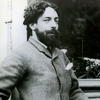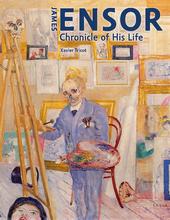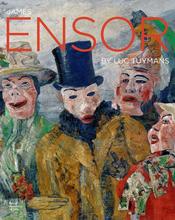More about The Assassination
- All
- Info
- Shop

Contributor
James Ensor’s weird monsters loved a good assassination.
They’re literally pouring out of the windows to watch what happens next. It’s a good show, and they’re probably congratulating each other for making it in time to get front seats. In Ensor’s invented world, we meet scary clowns, well-meaning skeletons, and hoards of other weird people. For instance, the guy who’s at the feet of the victim has dolphin fins for hands?
Ensor made various versions of this creepy scene, including a colored etching at the MOMA, and a zinc etching at the Art Institute of Chicago. They depict the same scene, just without the enthusiastic audience. In the painting, it seems as though the viewer is positioned on the opposite wall, watching torture happen under our noses, just like the guys on the other side.
The Assassination was completed in 1890. It is widely believed that Ensor based this scene on Edgar Alan Poe’s short story, "The Facts in the Case of M. Valdemar." The story is arrestingly grotesque, just the way Ensor liked it. A dying man is hypnotized right at the point of death. His body dies, but M. Valdemar doesn’t. His body slowly rots, stinking, leaking, and just deathly disgusting. Valdemar is kept this way for about 7 months. Finally, the hypnotist breaks the spell, and his body essentially reduces to a putrefied gloob. It was all quite disgusting and also highly unbelievable. But, back when Poe got the story published, people thought it was a very real medical report. Poe even had to apologize. It really makes one think, we never stood a chance against #fakenews.
Ensor’s drama is dark. But this horribly disturbing scenario is not literally dark. It’s lit like a carnival on a bright sunny day, which just makes it all the more disturbing. Ensor has a way of making you feel ten different things all at once. Just pick the one that lets you sleep at night.
Sources
- Ensor, James. “MOMA.” MOMA, n.d. https://www.moma.org/collection/works/63305.
- Ensor, James. “Art Institute of Chicago.” Art Institute of Chicago. Chicago, n.d. https://www.artic.edu/artworks/55256/the-assassination.
- Bischoff, Ulrich, Katarina Lozo, Wit Günther De, and Sarah Theerlynck. The Power of the Avant-Garde: Now and Then:n.d.
- Ensor, James. “James Ensor. The Assassination. 1888: MoMA.” The Museum of Modern Art, n.d. https://www.moma.org/collection/works/63305.
- Kofman, Ava. “The ‘Extraordinary Case’ of Poe’s Valdemar.” Method, n.d. http://www.methodquarterly.com/2015/06/the-extraordinary-case-of-poes-v….













